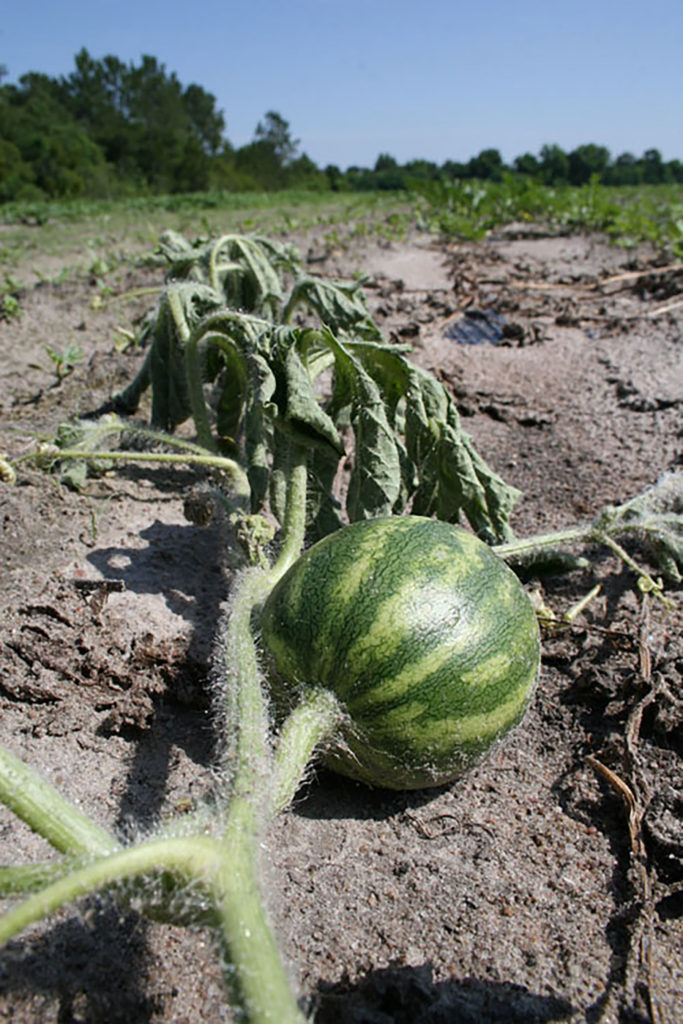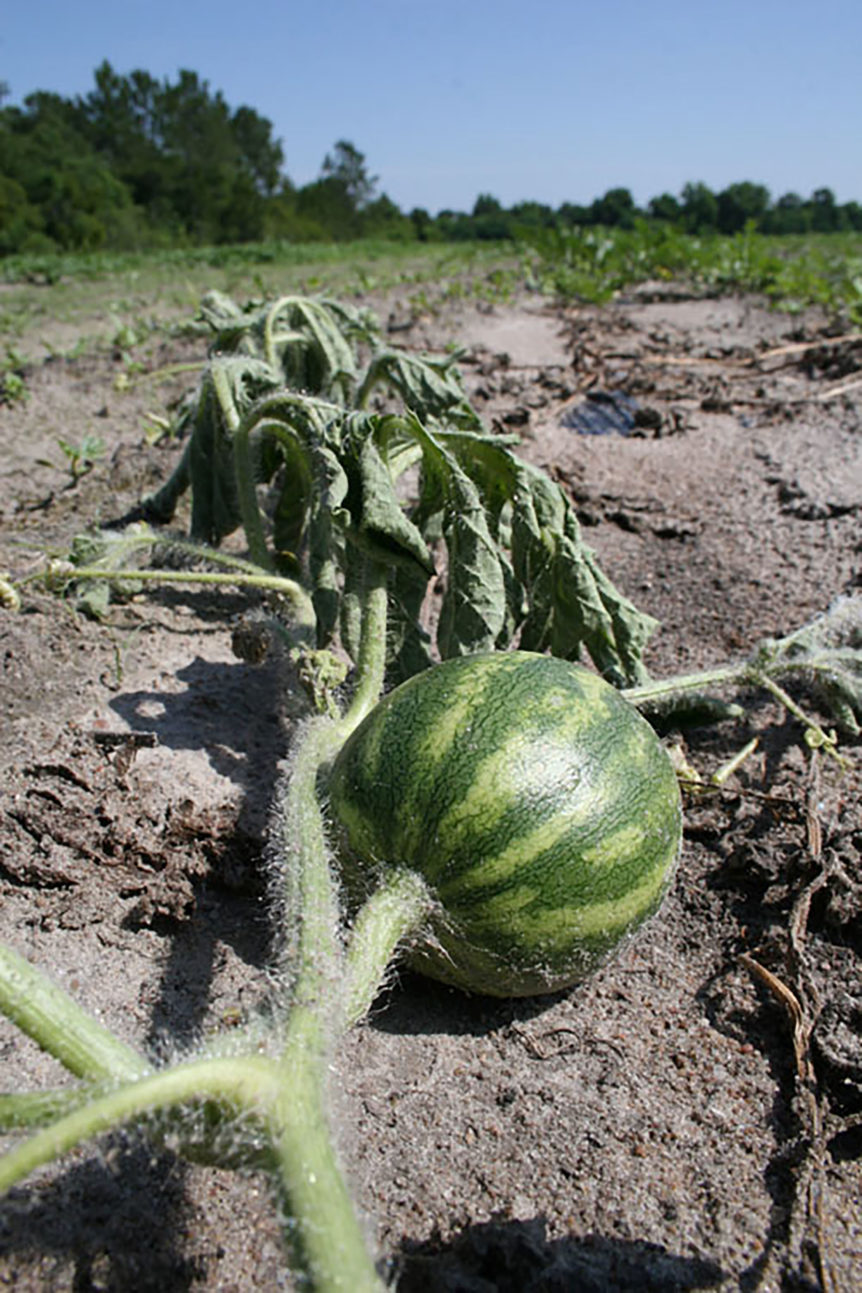
Research has shown that grafting or choosing the right watermelon cultivar is more important than fungicide applications in managing fusarium wilt, according to one Clemson scientist.
Plant pathologist Tony Keinath reported in his experiment at the Coastal Research and Education Center in Charleston, South Carolina, Cracker Jack had more diseased plants (5.8%) than Fascination (0.2%). Twelve of the 13 diseased plants were in Cracker Jack plots, due to it being susceptible to races 1 and 2 of Fusarium, while Fascination is resistant to race 1.
After the hot Memorial Day weekend, the number of wilted plants increased significantly, from 30 to 106. More than half of the healthy plants developed symptoms in some plots. Disease increased by 45% in Cracker Jack but only 21% in Fascination.
Cracker Jack grafted on Carolina Strongback rootstock had 0.5% wilted plants (1 of 200), and grafted Fascination had 0. It was significantly less than all non-grafted plants even if they were treated with fungicides.
As seen in 2023, fungicides labeled for management of Fusarium wilt (Propulse, Proline, and Miravis Prime) did not work effectively in Keinath’s heavily infested field. His conclusion and recommendation is that they probably also do not work in growers’ fields that may not be as heavily infested.
To manage Fusarium wilt, watermelon growers should choose cultivars advertised with resistance to Fusarium wilt race 1 (Fon1), because that resistance, as seen with Fascination over the past 10 years, also helps reduce Fusarium wilt race 2. Growing susceptible cultivars, like Cracker Jack or Shoreline, will infest fields with a higher level of Fusarium each time they are planted, leading to long-term problems with Fusarium wilt. Grafting is the most effective option.
Disease Symptoms
Fusarium wilt symptoms can appear at any growth stage. If they appear at the seedling stage, the plants will not even make it to vines. Plants infected with the Fusarium wilt pathogen will eventually die if the infection is severe. The plant can produce fruit if the infection is weak, but when it begins using the energy necessary to produce fruit, the plant will likely decline and slowly die.










